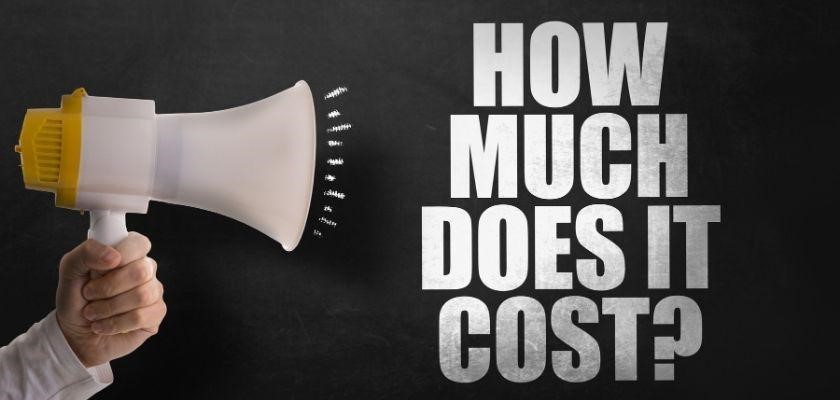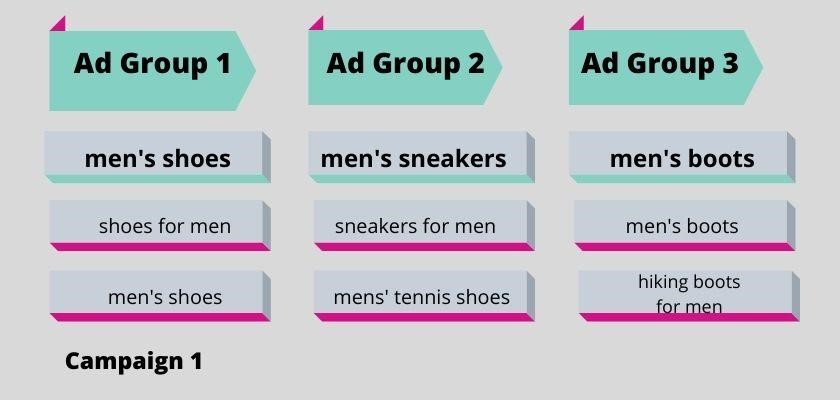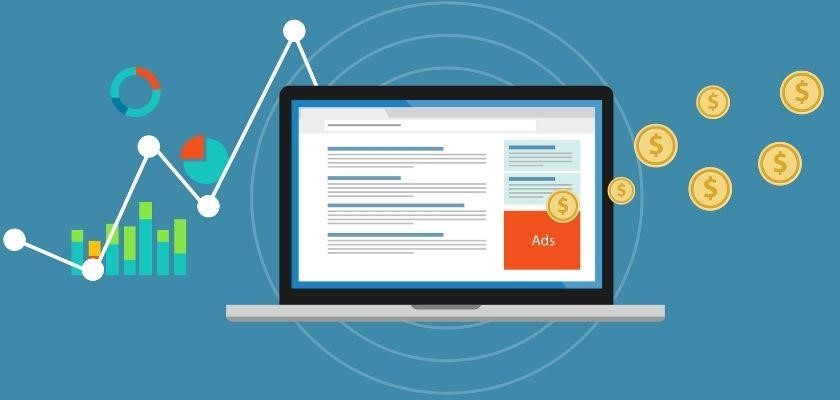Setting up your products on Amazon is easy and fast. However, that might be the only easy part. The most important thing — and probably the trickiest part — in starting your business on Amazon is gaining exposure. As Amazon has shown consistent growth every year, its PPC advertising is growing faster than before. With this, the competition is becoming fiercer. To get ahead of your competitors in terms of brand value and sales, having the right strategy is crucial.
With this in mind, here’s a detailed guide to launching products on Amazon and optimizing PPC campaigns. Hope this guide will help you in making your campaigns better than anyone else’s.
Highlights of Contents
What Are Amazon Ads?
These appear on Amazon’s results page when a shopper searches for an item. You can see it signified with the word “sponsored.” As a third-party seller, you can start creating these ads via Amazon Seller Central and pay via Amazon PPC.
Amazon PPC
Amazon pay-per-click, or Amazon PPC, is an in-house advertising solution where sellers could promote their products. Amazon PPC allows you to only pay for the ad whenever a buyer clicks on it and views the product.
If you want to boost your products’ visibility, you can bid for top ad positions on specific keywords. This, in turn, will give your ads greater visibility in Amazon’s Search Engine Page Results (SERP) and increase overall sales and revenue.
Do you know how to increase YouTube Live Stream Viewer?
The Benefits of Using Amazon PPC

With a minimum ad displaying cost, you can achieve greater visibility and maximum impressions. Keep in mind that you are paying for ad clicks and not the impressions, making this a cost-effective strategy.
Here are the main benefits when you decide to opt for Amazon PPC Advertising.
1. Higher Ranking
- Gives your product listings a higher ranking on Amazon SERPs.
- Boosts the discoverability of products to a bigger audience.
- Shows your products on the home page and not on the same page as your competitors.
2. Drives Sales
- Improves the total visibility of your product.
- Boosts your sales once your ads are properly optimized with keywords.
- Gives your product a bigger customer base.
- Places your listing on the first page of the Amazon search results page.
3. Increases Your Organic Rankings
- It significantly increases your product’s organic ranking.
- Amazon’s algorithm automatically places that listing on top of search results every time a product generates high sales.
- Boosts organic rankings for keywords for your PPC ads.
4. Helps Reach Buyers
- Your ad appears every time a shopper searches for a particular keyword.
- These ads pop up as targeted search results, which can be clicked by shoppers whenever they want to.
5. Global Reach
- Gives you a greater chance of reaching your global target.
- It helps you get millions of views in a shorter period.
- Higher probability of generating sales.
6. Device-Friendly
- Amazon PPC campaigns and product links can be easily viewed and accessed on any kind of device.
Cost of Amazon PPC Advertising

The cost of a Sponsored Ad or Amazon PPC Ad is determined where sellers receive a maximum benefit by only paying for the number of clicks they receive on each ad.
- No activation costs: You do not have to pay any activation fee as long as you’re registered with an Amazon PPC campaign.
- No subscription fee: You have the freedom to decide your PPC budget for displaying your ads and can start your campaign anytime. There’s no need to worry about paying a subscription fee when you choose to advertise your products via Amazon PPC.
Amazon PPC Campaign Methodology
Setting up an Amazon ad is pretty simple. You only need to focus on the three simple steps to start your Amazon ad campaign.
- Step 1: Pick the product/s that you want to promote or sponsor on Amazon.
- Step 2: Choose the right relevant keywords for your Sponsored Ad.
- Step 3: Set the ad campaign budget for your sponsored product.
Every time a shopper searches for an item, the respective search will provide you two types of results:
- Organic
- Paid
You can see your sponsored products in the following areas within the organic results:
- Top
- Side
- Bottom
- Combination of all the above
If you wish to get your products under the “sponsored” section for specific keywords, then running PPC campaigns would be the best option for you. When running a PPC campaign on Amazon, you are only paying for the clicks on your products. This can give you a higher probability of generating a more significant return on investment (ROI).
If a shopper clicks on your ad, this means that they might be interested in the product. Now, it’s what is in your product listing that can convert this click into sales. Thus, it is crucial that your product listing — including the title photo and price — can drive traffic to increase your conversion rates.
It is worth noting that you are being charged for clicks and not for sales. If you receive a higher click rate, but your sales aren’t increasing, it means that your listing is not converting into sales. This is where Amazon account optimization for your PPC ads comes in, which is discussed in detail below.
Also Read: Top 10 SEO trends for 2021
How to Optimize an Amazon PPC Ad to Drive Sales

It is of utmost importance that your product listing is optimized to drive sales. As the competition gets fierce among sellers on Amazon, there might be times when you doubt if your product can make it in the Amazon marketplace.
Luckily, you could find some tips and tricks for your product listings to get ahead of your competitors. You only need to follow the best strategies for Amazon advertising.
If you’re still new to Amazon PPC advertising, here are some effective strategies to help you get started:
1. Structure your campaigns consistently
Your Amazon PPC campaigns allow a rough structure for your ad activities. This can make or break the outcome of your ads. Typically, a good campaign should give you a set of characteristics that follows one or more of the features below:
- By Brand
- By Product Category
- By Top Sellers
It is crucial to be consistent with whatever method you use for your campaign. Making changes to your campaign structure could lead to repeated ads. For instance, when you create one by brand and another by category, you could be making different ads for the same product listing. It is best to benchmark your Advertising account when using Amazon PPC.
2. Place similar products in the same ad group
You need to have a set of products and a set of keywords for each ad group. Because all products should appear for that keyword set, it’s vital to take note that you pick a group of products that contextually fit those keywords.
3. Create different ad groups for search terms with different levels of specificity
If you have a large selection of products, you also need to have a larger number of keywords with varying specificity levels.
Let’s just say you sell a wide selection of shirts.
- For all shirts, the keyword ‘shirt’ is relevant
- For some shirts, the keyword ‘men’s shirts’ is relevant
- For some men’s shirts, the keyword ‘men’s red shirts’ is relevant.
If you place a general keyword in all ad groups for your specific items, you’d easily lose track of which ads are used for which bids. Avoid this by including more general similar keywords for separate ad groups. The top-selling products, for instance, can be included in these ad groups:
Campaign 1: Men’s clothes for Product Category 1

4. Set an automatic campaign
You can run an automatic campaign together with a manual campaign for the same products. Let Amazon’s automatic campaign run for a couple of days or weeks, depending on your budget, and then assess which keywords have driven the most sales. You can move the relevant and the highest-performing keywords into your manual campaign with a higher CPC bid.
5. Remove unwanted search queries to reduce costs
Your ads don’t always show the exact search terms that you’ve bid on. Shopper’s queries can vary from the search terms you’ve entered according to different match types. Avoid unnecessary costs by following these two options:
- Set keyword match types
- Set negative keywords
Amazon gives you three match types for the keywords in your sponsored products.
- Broad: The sponsored product ad will show when the query includes all words that have been assigned as a keyword.
- Phrase: The ad will appear when a shopper searches using the keyword/s entered in the exact order you set them.
- Exact: The ad will only appear when the search query matches the exact keyword given.
Another option to avoid burning your budget for irrelevant search terms is through using negative keywords. Your ad will not show for shopper queries containing these negative keywords.
There are two different negative match types you should know:
- Negative exact: Your ad will only not show if the search query exactly matches the negative keyword you’ve utilized.
- Negative phrases: Ads will not be included for search queries that contain the negative keyword as a part of the phrase or as a whole.
6. Identify your target Average Cost of Sales (ACoS)
It is crucial that you know your target ACoS and set it according to your campaign’s purpose. If your goal is to increase your profit, you should base your target figure on your profit margin. Typically, target figures range between 5% and 15%. On the other hand, if your goal is to promote a new product and increase your organic reach, you might consider paying more for your sales or even taking a loss in the short term to secure profit over the long term.
7. Optimize and track your cost-per-click (CPC) bid
Your optimal CPC bid differs per keyword. You can control your bid separately for different keywords in manual campaigns. Take note that you need a substantial amount of data when you evaluate your bids. So before you adjust your bid, you should wait at least a week to gather more data.
Below are some rules for CPC bid optimization that you should take note of:
- Cost of sale lies above the target value – Lower your bid to test whether your ad spend and sales can be brought to an acceptable ratio.
- Cost of sale lies below the target value – Test the ad’s reach and sales to see if it can be expanded if you raise the bid price.
- Keywords that are not converting to sales with very low impressions – Test whether a higher bid can make them active.
- Keywords that generate clicks without conversions – If the ad is already running for a long period and adjusting the bid price is not an option, then it should be terminated.
Keep tracking your keyword’s performance and adjust accordingly until you achieve which search terms work best for you.
Start Boosting Your Sales

You don’t need to be a digital marketing guru to be on top of your Amazon PPC campaigns. These tips will surely help you optimize your ad campaigns so you can start selling your Amazon products like hotcakes!
Do You know the importance of Keywords in Google Search Result?

I want to learn about, Amazon PPC Campaign, and this blog help me a lot. Make more blogs on such topics.
Awesome Blog. After reading this blog, I can optimize my PPC Campaign of Amazon.
Amazon is a great platform. These steps help in the optimization of the Amazon PPC Campaign. Thank you, guys!
Amazon PPC Campaign is very important and this blog helps me in this.